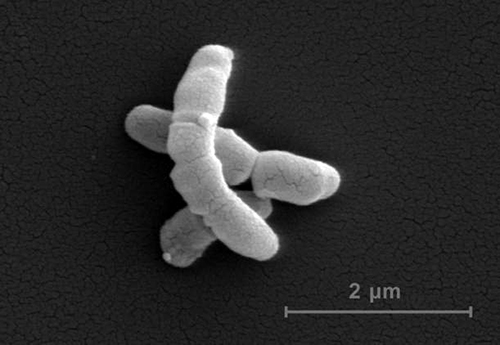



It’s probably difficult for teenagers to imagine that bacteria on their skin—often the ones involved in acne breakouts—are critical to the primary defense of our bodies from much more pathologic microbes. Yet, that is exactly what investigators at Lund University in Sweden recently discovered in a new research study, which describes that the most common bacteria on human skin secretes a protein that protects us from reactive oxygen species (ROS) thought to contribute to several skin diseases.

The antioxidant enzyme, designated RoxP, is produced by the skin bacterium Propionibacterium acnes and has as equally a strong effect on dangerous oxygen species as known antioxidants, such as vitamin C and vitamin E.
“The name originates from the fact that the bacterium was first discovered in a patient with severe acne. But whether it causes acne is uncertain—it may have been present merely because it is so common”, explained senior study investigator Rolf Lood, Ph.D., a postdoctoral researcher in the Department of Clinical Sciences at Lund University.
Dr. Lund and his colleagues found that RoxP protects against oxidative stress, a condition in which ROS damage cells. Oxidative stress is a contributing factor in several skin diseases, including atopic dermatitis, psoriasis, and skin cancer. A common cause of oxidative stress on the skin is ultraviolet (UV) radiation from the sun. Moreover, the researchers found that RoxP was exclusively produced by P. acnes, as they could find no homologs in other bacteria.
“This protein is important for the bacterium’s very survival on our skin,” Dr. Lood noted. “The bacterium improves its living environment by secreting RoxP, but in doing so, it also benefits us.”
The findings from this study were published recently in Scientific Reports in an article entitled “A Novel Enzyme with Antioxidant Capacity Produced by the Ubiquitous Skin Colonizer Propionibacterium acnes.”
Interestingly, the authors noted that P. acnes is so common that it is present in both healthy individuals and people with skin diseases. However, people have different amounts of the bacterium on their skin and can produce varying quantities of the protective RoxP enzyme. The Lund researchers are looking to investigate this phenomenon further in both patients and laboratory animals.
In the human study, the scientists will compare patients with basal cell carcinoma, a precancerous condition called actinic keratosis, and a healthy control group. The researchers are hopeful that this study will be able to show whether there is any connection between the degree of illness and the amount of RoxP on the patient’s skin.
Additionally, an investigation of laboratory animals will determine whether RoxP also functions as protection—for instance, mice who have been given RoxP and others who have not been exposed to UV radiation. The researchers will then observe whether the RoxP mice have a better outcome than those who were not given the protective protein.
“If the study results are positive, they could lead to the inclusion of RoxP in sunscreens and its use in the treatment of psoriasis and atopic dermatitis,” stated Dr. Lood optimistically.
 Relevant
news
Relevant
news